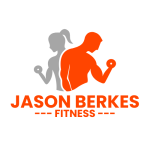Introduction
Injuries can happen to anyone, anytime, and can significantly impact daily life. Whether you’re an athlete, a fitness enthusiast, or just going about your daily routine, injuries can cause pain, distress and disrupt your well-being. However, the good news is that most injuries can be prevented. By incorporating effective injury prevention strategies into your daily life, you can reduce the risk of injury, maintain your physical health and continue doing the things you love. In this article, we’ll explore the importance of injury prevention, discuss common types of injuries and provide practical strategies to protect your body.
Understanding the Importance of Injury Prevention
Injury prevention is crucial for maintaining physical health and overall well-being. Injuries can cause physical pain, emotional distress and financial burdens. By prioritizing injury prevention, you can:
- Reduce risk of chronic pain: Preventing injuries reduces the likelihood of developing chronic pain conditions.
- Maintain physical function: Injury prevention helps preserve physical abilities and mobility.
- Support mental health: Avoiding injuries minimizes stress, anxiety and depression.
- Save time and resources: Preventing injuries reduces medical costs and lost productivity.
- Enhance quality of life: Staying injury-free enables you to pursue activities and hobbies without restrictions.
Common Types of Injuries
- Sprains and strains: Overstretching or tearing of ligaments and muscles.
- Overuse injuries: Wear and tear from repetitive movements (e.g., tendonitis, shin splints).
- Falls: Slips, trips and falls can cause fractures, head injuries and spinal cord damage.
- Sports-related injuries: Contact and non-contact injuries (e.g., concussions, ACL tears).
- Workplace injuries: Musculoskeletal disorders, cuts, and machinery-related accidents.
Injury Prevention Strategies
I. Physical Preparation
- Warm-up and cool-down: Gradual exercises before and after physical activity.
- Stretching: Regular flexibility exercises.
- Strengthening: Building muscle strength, particularly core and stabilizer muscles.
- Cardiovascular conditioning: Regular aerobic exercise.
II. Safety Measures
- Personal protective equipment: Wear seatbelts, helmets, knee pads and gloves.
- Safety gear inspection: Regularly check equipment for damage.
- Workplace ergonomics: Ensure proper posture, lighting and workspace setup.
- Home safety: Install handrails, secure rugs and remove tripping hazards.
III. Lifestyle Modifications
- Balanced diet: Nutrient-rich foods for optimal muscle and bone health.
- Hydration: Adequate water intake.
- Sleep: Aim for 7-9 hours of restful sleep.
- Stress management: Yoga, meditation or deep breathing exercises.
IV. Awareness and Education
- Learn proper techniques: Understand correct posture, lifting and movement methods.
- Recognize early warning signs: Address minor issues before they escalate.
- Stay informed: Follow safety guidelines, industry updates and health recommendations.
- Seek professional guidance: Consult healthcare professionals or fitness experts.
Additional Tips for Specific Activities
- Sports: Focus on sport-specific training, use proper equipment and follow rules.
- Workplace: Take regular breaks, prioritize ergonomics and report hazards.
- Home: Ensure proper lighting, secure furniture and install safety devices.
- Travel: Research safety guidelines, pack essential safety items.
Conclusion
Injury prevention is a proactive and multifaceted approach to maintaining physical health and well-being. By incorporating these strategies into daily life, you can significantly reduce the risk of injury and continue pursuing activities with confidence. Remember, prevention is key. Take control of your body’s safety today!

